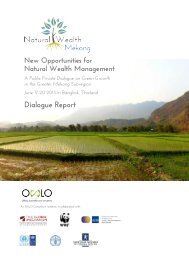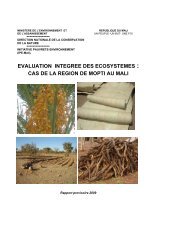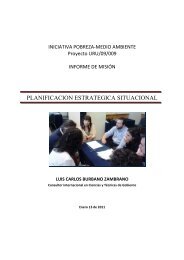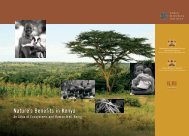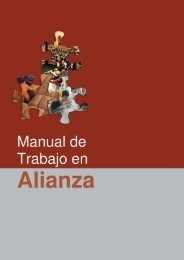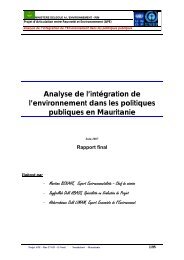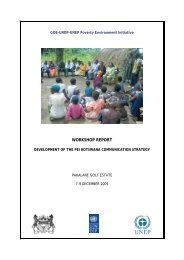Meru South District - UNDP-UNEP Poverty-Environment Initiative
Meru South District - UNDP-UNEP Poverty-Environment Initiative
Meru South District - UNDP-UNEP Poverty-Environment Initiative
Create successful ePaper yourself
Turn your PDF publications into a flip-book with our unique Google optimized e-Paper software.
Fig 2: Storms drain being used to discharge waste water<br />
Storms drain being used to discharge waste water at Chuka town. This eventually ends up at the nearby<br />
Naka River, posing serious health risks to downstream users<br />
• Industrial wastes<br />
Generated from manufacturing processes and include effluent from coffee<br />
factories, metallic wastes and used oils from garages and Jua kali sheds.<br />
Fumes and dusts from Posho mills and timber workshop including noise<br />
pollution. The waste generated includes – hazardous wastes and toxic wastes.<br />
• Construction wastes<br />
Includes pieces of timber, iron bars, blocks, glass, iron sheets, tiles, empty<br />
cement bags, plastic tins etc.<br />
• Street wastes<br />
These are wastes that accumulate on the streets and roads and include street<br />
surface dirt, dropped materials from vehicles, leaves, sweepings from<br />
pavements, food wrapping, fruit peeling, cigarette, buts etc.<br />
• Junks/Old vehicles<br />
Result from left over equipments old motor vehicles, ovens gas cookers, old<br />
refrigerators etc.<br />
• Mining wastes<br />
Include broken stones, minerals, salts, dusts etc.<br />
• Dead animals<br />
These arise from unclaimed dead animals that are left to rot along the road<br />
sides, public and private establishments e.g. dogs, cats, cattle, goats etc.<br />
• Sewerage treatment wastes<br />
23



